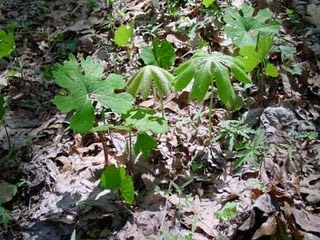
While developers of genetically engineered foods (GEF) strive to produce hardier and higher-yielding plants, ecologists throughout the world eye transgenics skeptically. They fear that these genetically altered plants, may escape into the wild and displace native plants with unforeseen and potentially devastating results. Dr. Wes Jackson, director of the Land Institute in Kansas, a non-profit research facility devoted to alternative agricultural practices, warns that, if misused, biotechnology may lead to the human-induced degradation of the genomes of plant species. “What is being more or less ignored” in the rush to biotechnology, he  said in an interview with the Chronicle of Higher Education, “is that some of the same principles and processes that govern an ecosystem, like a forest or a prairie, also operate with genomes. The genome is a miniature ecosystem.”1 Thinking along the same lines, Jane Rissler of the Union of Concerned Scientists of America suggested that transgenic science practices may release a seemingly harmless gene into our food supply with life-threatening consequences.
said in an interview with the Chronicle of Higher Education, “is that some of the same principles and processes that govern an ecosystem, like a forest or a prairie, also operate with genomes. The genome is a miniature ecosystem.”1 Thinking along the same lines, Jane Rissler of the Union of Concerned Scientists of America suggested that transgenic science practices may release a seemingly harmless gene into our food supply with life-threatening consequences.
According to the Institute, “ecosystems self-regulate, accumulate ‘ecological capital’ and are largely resilient to most perturbations.” According to Jackson, many problems faced by the agriculture industry today stem from replacing natural systems with totally alien systems, and from waging war on rather than allying ourselves with natural processes. He suggests that this has resulted in a steady loss of ecological capital (the erosion
 and salting of soils, the steady domesticating and weakening of our crops).
and salting of soils, the steady domesticating and weakening of our crops).The mission of the Land Institute is to “honor natural ecosystems and mimic them.” The Land Institute argues that “the tendency of all natural ecosystems is to increase their ecological wealth. For instance, all prairie, left alone, recycles materials, sponsors its own fertility, runs on contemporary sunlight, and increases biodiversity. Agricultural systems tend otherwise. They erode and degrade ecological capital as they provide for human needs.”4
The premise behind “natural systems agriculture” is a “polyculture of herbaceous perennials, which would run on sunlight, preserve soil, maintain biological diversity, yield adequately, and not rely on harmful synthetic chemicals for fertility or pest management.”5 Polycultures of perennial indigenous plants would incorporate the dynamic properties of natural succession.
 Working with four species (Illinois bundleflower, a legume; mammoth wild rye, a cool-season grass; eastern gammagrass, a warm-season grass related to corn; and Maximilian sunflower) the Land Institute’s research and development in biomimicry is finding answers to four basic agronomic questions:
Working with four species (Illinois bundleflower, a legume; mammoth wild rye, a cool-season grass; eastern gammagrass, a warm-season grass related to corn; and Maximilian sunflower) the Land Institute’s research and development in biomimicry is finding answers to four basic agronomic questions: Question 2: Can a perennial polyculture overyield? Successful use of polycultures (instead of monocultures, traditionally used to provide high yields and uniform maturation time), avoids the “all or nothing” effect of crops of one variety and one stage at the mercy of the vicissitudes of nature in the form of droughts, floods, pests, hail and eroding soils. Polycultures, by virtue of their diversity and multiple stages in succession, are far more hardy against pests and able to withstand what nature deals out. And, perhaps, of far more import, polycultures alone are ecologically sustainable. But can polyculture yields stay even with or actually overyield those of monocultures? Overyielding is common in traditional polyculture systems of Latin America, Africa, and Asia. “Our biological research has shown the feasibility of a mixed perennial grain agriculture,” says Jackson. Experiments performed by the Land Institute support the persistence of overyielding in polycultures because of the synergistic and communal opportunities afforded by mixed crops, rather than the competition of monocultures.
Question 2: Can a perennial polyculture overyield? Successful use of polycultures (instead of monocultures, traditionally used to provide high yields and uniform maturation time), avoids the “all or nothing” effect of crops of one variety and one stage at the mercy of the vicissitudes of nature in the form of droughts, floods, pests, hail and eroding soils. Polycultures, by virtue of their diversity and multiple stages in succession, are far more hardy against pests and able to withstand what nature deals out. And, perhaps, of far more import, polycultures alone are ecologically sustainable. But can polyculture yields stay even with or actually overyield those of monocultures? Overyielding is common in traditional polyculture systems of Latin America, Africa, and Asia. “Our biological research has shown the feasibility of a mixed perennial grain agriculture,” says Jackson. Experiments performed by the Land Institute support the persistence of overyielding in polycultures because of the synergistic and communal opportunities afforded by mixed crops, rather than the competition of monocultures. Land Institute and other researchers have found that perennial grain polycultures compete well against weeds because of their permanent canopy, deep and extensive root systems and vigorous regrowth in the spring. Intercropping of polycultures combines the weed-suppressing effects of different crops, by intercepting more light, water, and nutrients over monocultures, thus eliminating the need for herbicide application. Hawkin, Lovins and Lovins describe how Japanese farmers can efficiently hand-sow and harvest their polycultures, “because an elegantly conceived sequence of plantings provides the weed control, composting, and other services automatically”.7
Land Institute and other researchers have found that perennial grain polycultures compete well against weeds because of their permanent canopy, deep and extensive root systems and vigorous regrowth in the spring. Intercropping of polycultures combines the weed-suppressing effects of different crops, by intercepting more light, water, and nutrients over monocultures, thus eliminating the need for herbicide application. Hawkin, Lovins and Lovins describe how Japanese farmers can efficiently hand-sow and harvest their polycultures, “because an elegantly conceived sequence of plantings provides the weed control, composting, and other services automatically”.7In the final analysis, Jackson submitted that, “We don’t need one more breakthrough in agriculture. We need to stare hard at (our) fields . . . then reach into the vast literature in evolutionary biology and ecology to learn the rules and laws at work on the land before we got here, and out of this knowledge, put together a new synthesis, a truly new paradigm for agriculture.”
References:
1 Malcolm G. Scully, The Chronicle of Higher Eduction, February 18, 2000, Salina, Kansas.
2,3 Janine Benyus, Biomimicry, Quill William Morrow, New York, 1997, 308pg.
4, 5 The Land Institute Web Site: www.LandInstitute.org
6, 7 Paul Hawkin, Amory Lovins and L. Hunter Lovins, Natural Capitalism, Little, Brown and Company, Boston, 1999, 396pg.








